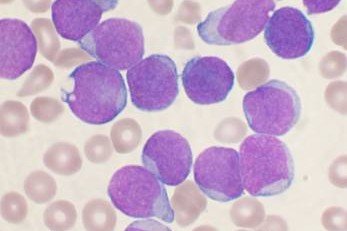An American study reports that active individuals who enjoy high-impact sports such as running may need higher vitamin D levels to reduce the risk of stress fractures.
If you practice sport regularly and you prefer high-impact activities, this latest American study, published in the Journal of Foot & Ankle Surgery, advises you to monitor your vitamin D levels in order to avoid stress fractures.
Vitamin D is an essential nutrient which can behave like a hormone. It is derived from food and the skin’s exposure to sunlight. It is essential for bone development and regeneration to ensure appropriate bone density. If you have low levels of vitamin D, you have an increased risk of developing osteoporosis – a condition in which the skeleton becomes brittle due to a reduction in bone mass – and stress fractures.
The American researchers discovered that these risks were higher with people who practiced high-impact sports such as running, tennis, skipping and step. A stress fracture occurs when too much pressure is placed on the same spot on a bone over a long period of time. For example, an ankle or foot bone fracture in a runner.
The researchers noted the vitamin D levels of people with confirmed stress fractures. “By assessing the average serum vitamin D concentrations of people with stress fractures and comparing these with the current guidelines, we wanted to encourage a discussion regarding whether a higher concentration of serum vitamin D should be recommended for active individuals,” explained Jason R. Miller, the study’s lead author.
Over a period of three years, between July 2011 and August 2014, the researchers noted the vitamin D levels of patients who felt pain in their feet and ankles from suspected fractures. They had MRI scans of the parts of the body in question. No acute fractures were noted. However, based on previous physical examinations and a precise review of the images, the radiologists were able to discover stress fractures. A stress fracture is not a classic fracture that occurs after a sharp blow, but rather a small crack of the bone caused by significant repeated strain.
After 3 months, blood samples were taken from 53 of these patients. The results showed that over 80% had insufficient or deficient vitamin D levels, based on the standards recommended by the Vitamin D Council, i.e., 40 to 80 ng/mL. And according to the standards set by the Endocrine Society (30 to 100 ng/mL), over 50% had insufficient levels.
Based on this research, Dr. Miller and his team recommend a vitamin D level of at least 40 ng/mL to provide protection from stress fractures, particularly for active individuals who enjoy high-impact activities. These results support the findings of a previous study in which 600 female Navy recruits were shown to have a greater risk of stress fractures of the tibia and fibula with a vitamin D level of less than 20 ng/mL, compared to women with levels above 40 ng/mL.
However, vitamin D is not the only factor responsible for stress fractures: “We recommend that individuals who regularly exercise or enjoy participating in higher impact activities should be advised on proper and gradual training regimens to reduce the risk of developing a stress fracture”, advises Dr. Miller.
Vitamin D is found mainly in oily fish such as sardines and mackerel, calf’s liver, eggs and cod-liver oil.
Read More: Vitamin D levels should be boosted for intense sporting activity to avoid stress fractures
Source: Ibnlive.com



